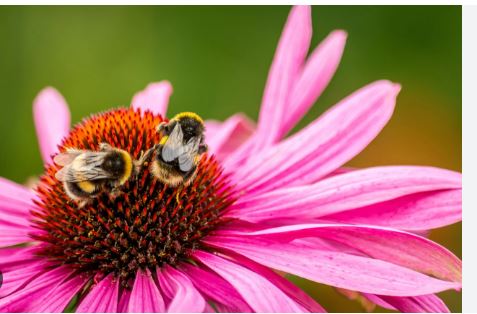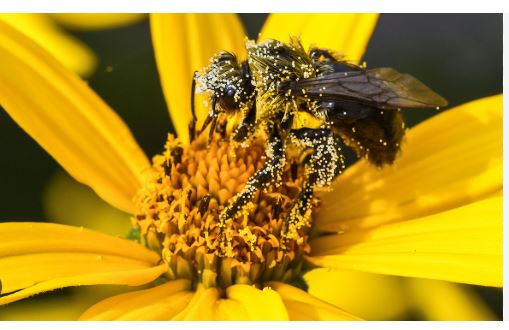
Flowers with lots of pollen produce abundant, powdery grains, making them vital for pollinators but often problematic for allergy sufferers. These blooms, in colors like yellow, white, or pink, paired with green foliage, create striking displays in gardens or wildflower settings. They thrive across climates, typically USDA zones 3–11, and are valued for ecological roles despite allergenic potential.
These flowers grow on diverse plants, including annuals, perennials, or shrubs, preferring full sun and well-drained soil. Their open, often single-form blooms expose pollen, suiting borders, meadows, or beds. Some spread aggressively, requiring control to prevent invasiveness in favorable conditions.
Blooming from spring to fall, their pollen-rich centers attract bees, butterflies, and birds, supporting robust pollination. High pollen output, especially in late summer, can worsen allergies due to wind-dispersed grains. Careful placement in gardens minimizes human exposure while benefiting ecosystems.
Some of these flowers self-seed or grow in disturbed soils, making them resilient but potentially weedy. Regular deadheading or pruning maintains aesthetics and controls spread. Their adaptability suits low-maintenance gardens, though allergenic species need strategic planning.
Ecologically, these flowers enhance biodiversity by providing ample nectar and pollen. Their vibrant displays add visual appeal to landscapes, but their allergenic nature requires balance in urban or sensitive areas. With proper care, they offer both ecological benefits and aesthetic charm.

Flowers With Lots of Pollen
Daisy
This perennial daisy produces white blooms with yellow centers, 3–4 inches wide, on green stems. Native to Europe, it thrives in full sun and well-drained soil (zones 5–9). Blooming summer, its open flower heads release copious pollen, attracting bees but triggering allergies, making it a poor choice for hay fever sufferers.
Sunflower
This annual sunflower bears large, yellow blooms, 12–24 inches across, with pollen-heavy brown centers and tall green stems. Native to North America, it grows in full sun and well-drained soil (zones 2–11). Blooming summer, it attracts bees and birds but its high pollen output irritates allergies.
Chrysanthemum
This perennial mum has dense, colorful blooms, 2–4 inches wide, in red, yellow, or pink, with bushy green foliage. Native to Asia, it thrives in full sun and fertile soil (zones 5–9). Blooming fall, its high pollen content attracts pollinators but extends allergy season.
Dahlia
This dahlia cultivar produces large, single-form, vibrant blooms, 8–12 inches wide, with green stems. Native to Mexico, it grows in full sun and rich soil (zones 8–11). Blooming summer to fall, its exposed pollen attracts bees, though some double hybrids are pollen-free.
Ragweed
This weedy annual bears small, greenish-yellow flower spikes on branching green stems. Native to North America, it thrives in full sun and disturbed soil (zones 3–10). Blooming late summer to fall, a single plant produces billions of pollen grains, a major allergy trigger.
Purple Coneflower
This perennial has purple-pink, daisy-like blooms, 4–5 inches wide, with orange, pollen-rich centers and green leaves. Native to North America, it grows in full sun and well-drained soil (zones 3–9). Blooming summer, it attracts bees and butterflies but may irritate allergies.
Yarrow
This perennial bears clusters of tiny, pink flowers, 2–3 inches across, on feathery green stems. Native to Europe, it thrives in full sun and poor soil (zones 3–9). Blooming summer, its pollen-rich blooms draw pollinators but can bother allergy sufferers.
Black-Eyed Susan
This annual or short-lived perennial has yellow, daisy-like blooms, 2–4 inches wide, with dark brown, pollen-heavy centers. Native to North America, it grows in full sun and well-drained soil (zones 3–9). Blooming summer to fall, it attracts bees but produces airborne pollen.
Lupin
This perennial produces tall spikes of pea-like blooms, 4–6 inches long, in blue, pink, or white, with green leaves. Native to North America, it thrives in full sun and well-drained soil (zones 4–8). Blooming early summer, its hidden pollen is accessed by bees, potentially allergenic.
Tulip
This perennial bulb bears single, vivid-pink blooms, 4–6 inches wide, with green leaves. Native to Central Asia, it grows in full sun and well-drained soil (zones 3–8). Blooming spring, its open blooms release abundant pollen, attracting pollinators but dusting petals with allergens.
Daffodil
This perennial bulb produces white blooms with yellow trumpets, 3–4 inches wide, and slender green leaves. Native to Europe, it grows in full sun to partial shade and well-drained soil (zones 3–9). Blooming spring, its pollen-rich trumpets draw early bees but may trigger allergies.
Feverfew
This perennial has small, white, daisy-like blooms, 1–2 inches wide, with yellow centers and aromatic green leaves. Native to Europe, it thrives in full sun and well-drained soil (zones 5–8). Blooming summer, its open flowerheads release pollen, attracting insects but irritating allergies.
Ox-Eye Daisy
This perennial bears white, single blooms, 2–3 inches wide, with yellow centers and green stems. Native to Europe, it grows in full sun and poor soil (zones 3–8). Blooming summer, its high pollen draws bees but spreads invasively, worsening allergies.
Goldenrod
This perennial produces plumes of tiny yellow flowers, 3–5 inches long, on tall green stems. Native to North America, it thrives in full sun and various soils (zones 3–9). Blooming late summer to fall, its heavy pollen attracts bees but is often mistaken for allergy-causing ragweed.
Chamomile
This annual has small, white, daisy-like blooms, 1 inch wide, with yellow centers and feathery green leaves. Native to Europe, it grows in full sun and well-drained soil (zones 4–9). Blooming summer, its high pollen output attracts pollinators and is used in teas, even irritating when dried.
Aster
This perennial bears star-shaped, purple or pink blooms, 1–2 inches wide, with yellow centers and sturdy green stems. Native to North America, it thrives in full sun and moist soil (zones 4–8). Blooming fall, its pollen-rich blooms draw bees but are problematic for allergies.
Cosmos
This annual has single, pink or white blooms, 3–5 inches wide, with yellow centers and feathery green leaves. Native to Mexico, it thrives in full sun and well-drained soil (zones 2–11). Blooming summer to fall, its open blooms release pollen, attracting bees but potentially allergenic,